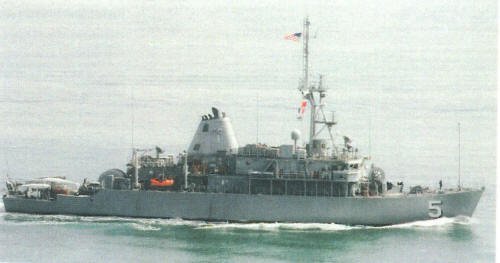
NAVYPEDIA
 Support the project with paypal
Support the project with paypal
Photo

Guardian 2002
Ships
| No | Name | Yard No | Builder | Laid down | Launched | Comm | Fate |
|---|---|---|---|---|---|---|---|
| MCM1 | Avenger | Peterson Builders, Sturgeon Bay | 3.6.1983 | 15.6.1985 | 12.9.1987 | stricken 9.2014 | |
| MCM2 | Defender | Marinette Marine | 1.12.1983 | 4.4.1987 | 30.9.1989 | stricken 10.2014 | |
| MCM3 | Sentry | Peterson Builders, Sturgeon Bay | 8.10.1984 | 20.9.1986 | 2.9.1989 | in service (2019) | |
| MCM4 | Champion | Marinette Marine | 28.6.1984 | 15.4.1989 | 8.2.1991 | in service (2019) | |
| MCM5 | Guardian | Peterson Builders, Sturgeon Bay | 8.5.1985 | 20.6.1987 | 16.12.1989 | wrecked 17.1.2013 | |
| MCM6 | Devastator | Peterson Builders, Sturgeon Bay | 9.2.1987 | 11.6.1988 | 6.10.1990 | in service (2019) | |
| MCM7 | Patriot | Marinette Marine | 31.3.1987 | 15.5.1990 | 18.10.1991 | in service (2019) | |
| MCM8 | Scout | Peterson Builders, Sturgeon Bay | 8.6.1987 | 20.5.1989 | 15.12.1990 | in service (2019) | |
| MCM9 | Pioneer | Peterson Builders, Sturgeon Bay | 5.6.1989 | 25.8.1990 | 7.12.1992 | in service (2019) | |
| MCM10 | Warrior | Peterson Builders, Sturgeon Bay | 25.9.1989 | 8.12.1990 | 7.4.1993 | in service (2019) | |
| MCM11 | Gladiator | Peterson Builders, Sturgeon Bay | 7.5.1990 | 29.6.1991 | 18.9.1993 | in service (2019) | |
| MCM12 | Ardent | Peterson Builders, Sturgeon Bay | 22.10.1990 | 26.11.1991 | 18.2.1994 | in service (2019) | |
| MCM13 | Dextrous | Peterson Builders, Sturgeon Bay | 11.3.1991 | 20.6.1992 | 9.7.1994 | in service (2019) | |
| MCM14 | Chief | Peterson Builders, Sturgeon Bay | 19.8.1991 | 12.6.1993 | 5.11.1994 | in service (2019) |
Technical data
| Displacement standard, t | 1145 |
|---|---|
| Displacement full, t | 1333 |
| Length, m | 64.8 wl 68.4 oa |
| Breadth, m | 11.9 |
| Draught, m | 3.42 (hull) |
| No of shafts | 2 |
| Machinery | MCM1, 2: 4 Waukesha L-1616 diesels MCM3-14: 4 Isotta-Fraschini ID36SS 6V-AM diesels |
| Power, h. p. | MCM1, 2: 2600 MCM3-14: 2280 |
| Max speed, kts | 13.5 |
| Fuel, t | diesel oil |
| Endurance, nm(kts) | |
| Armament | 2 x 1 - 12.7/90, 2 SLQ-48 MNS UUV, SLQ-37(v)3 minesweeping array (A Mk 2, A Mk 4(V), A Mk 6(B) acoustic and M Mk 5, M Mk 6, M Mk 7 magnetic minesweeping arrays), SLQ-38 (Type 0 Size 1) mechanical minesweeping gear, 2 RIBs for mine-disposal divers |
| Electronic equipment | MCM1-5: SPS-66(v)9, SPS-55 radars, SQQ-30, WQN-1 sonars, SYQ-13 CCS MCM6-14: SPS-66(v)9, SPS-55 radars, SQQ-32(v)3, WQN-1 sonars, SYQ-13 CCS |
| Complement | 83 |
Graphics
Project history
These are wooden-hulled craft with glass fibre superstructures. Reportedly they suffered from severe electromagnetic interference problems, and the hull had to be lengthened 2.1m due to changes in weight. There were also engine problems (Avenger had hers installed wrong way round). The MCMs are lineal descendants of the earlier MSOs. They carry both a mine neutralization vehicle (SLQ-48) and standard influence and mechanical sweeps.
From the late 1960s onwards there were several projects for more or less sophisticated new minesweepers, as mine countermeasures technology became more and more elaborate. By the early 1980s it was primarily a matter of locating mines on the seabed, using high-definition sonar (currently SQQ-14), and then destroying mines one by one (minehunting). Success requires, among other things, a very high degree of navigational accuracy. Meanwhile, the function of the minesweepers has been a matter of some controversy. For example, with the appearance of deep-water ASW mines such as CAPTOR, there was a call for deep-water sweepers particularly adapted to keeping the approaches to ballistic submarine bases clear of Soviet mines. On the other hand, the Soviet fleet continued to threaten US ports and coastal waters with more conventional forms of mine warfare; and there is still the threat of mining to stop amphibious assaults - a threat which will abate somewhat as the United States shifts to air-cushion vehicles for such assaults.
A new programme for mine countermeasure (MCM) ship construction began in the 1970s, and the CNO approved a 1640t, 80.8m, 18kt ship m November 1976. In early 1977 nineteen were planned for construction in FY79-FY82. Its primary purpose would have been to counter deep-water ASW mines, and it was abandoned as too expensive. A new design, closely based on that of the existing ocean minesweeper (MSO), was substituted. The first unit, USS Avenger (MCM1), was ordered on 29 June 1982, under the FY82 programme.
The MCM was envisaged as the high end of a high-low mix of minesweepers, the lower end of which would consist of a combination of coastal minehunters (MSH) and mobilised civilian craft as well as rninesweeping helicopters. As in the case of her predecessors, Avenger uses a variable-depth sonar (SQQ-30, an improved SQQ-14) for minehunting. Deep mines will be neutralised by remote-control vehicles, operated from an automated CIC, which will plot mine locations with the assistance of a precise integrated navigation system SSN-2(V) PINS.
Modernizations
1990-1992, Sentry, Champion: - SQQ-30 sonar; + SQQ-32(v)3 sonar
1994-1997, Sentry, Champion, Guardian, Devastator, Patriot, Scout, Pioneer, Warrior, Gladiator, Ardent, Dextrous, Chief: - SYQ-13 CCS; + SYQ-15 CCS
2012-2016, Sentry, Champion, Devastator, Patriot, Scout, Pioneer, Warrior, Gladiator, Ardent, Dextrous, Chief: - 2 SLQ-48 MNS UUV, SSQ-32(v)3 sonar; + 2 Seafox/Archerfish MNS UUV (SLQ-48 EMNS countermine system), AMAS acoustic minesweeping gear, SSQ-32(V)4, Klein sonars
late 2010, Gladiator: + 1 x 1 - 25/75 Mk 38
late 2010s, many: - SPS-55 radar; + SPS-73 radar
Naval service
Guardian ran aground 17.1.2013 off the coast of the Philippines suffering heavy damage and was stricken next month.
 HOME
HOME FIGHTING SHIPS OF THE WORLD
FIGHTING SHIPS OF THE WORLD UNITED STATES OF AMERICA
UNITED STATES OF AMERICA MINE WARFARE SHIPS
MINE WARFARE SHIPS AVENGER minesweepers - minehunters (1987 - 1994)
AVENGER minesweepers - minehunters (1987 - 1994)
